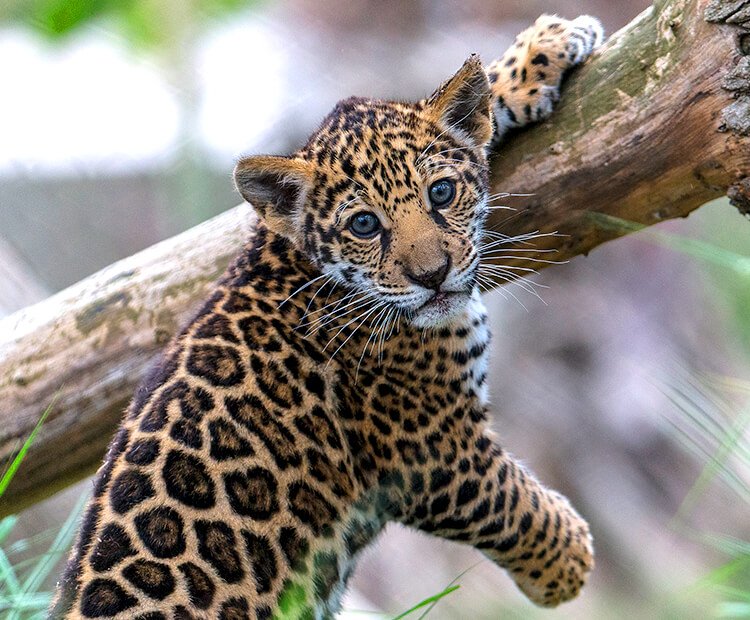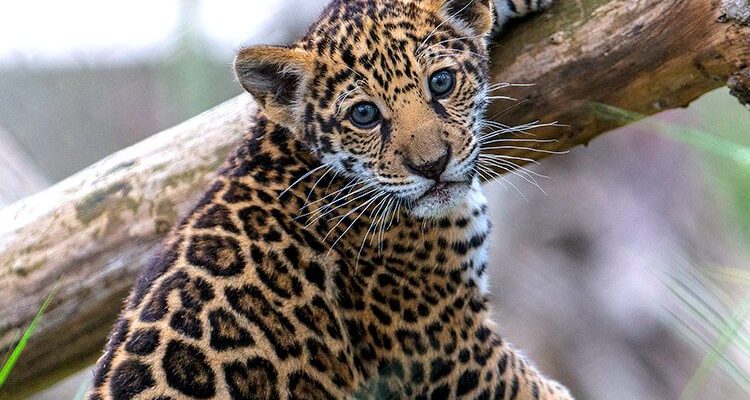
Jaguars are born with instincts that kick in almost immediately, but just like any young creature, they need that initial care from their mothers to survive. The relationship between a jaguar and her cubs is a beautiful example of the work of nature; it’s not just about feeding and sheltering them. Instead, it’s a comprehensive approach that ensures these majestic cats grow into their roles as apex predators. So, let’s dive into the world of jaguar parenting and see how these big cats manage the delicate balance of raising their young.
Pregnancy and Birth: The Start of a New Life
Jaguars have a gestation period of about 93 to 105 days, which is roughly three to a little over three months. That’s not an incredibly long time, but during this period, the mother is in a unique state of preparation. She’ll start to seek out a secure den, often in a tree hollow or a thicket, to provide safety from other predators and human threats.
When it comes to giving birth, a jaguar will typically have a litter of two to four cubs. Each cub weighs about two to four pounds at birth and is born blind and helpless. It’s almost like starting a new chapter in a captivating story—one where the mother’s instincts and protective nature take center stage. The cubs rely heavily on their mother for warmth, milk, and safety as they begin their journey in the wild.
First Weeks: Survival in a Vulnerable State
During the first few weeks of life, cubs are extremely vulnerable. Their mother is vigilant, keeping a close eye on them while also managing her own needs for food and water. This period is crucial because it sets the stage for their development. Jaguars have an interesting way of communicating with their cubs, using soft grunts and purrs that establish a strong bond.
Mothers typically nurse their cubs for about three months. This milk is packed with nutrients that help them grow strong and healthy. Imagine a tiny kitten, but with an even more powerful and confident spirit. The cubs start to gain weight rapidly, doubling their size within weeks. By the time they reach around two months old, their eyes open, revealing the stunning green or amber that will come to define them as adults.
Learning and Exploration: The Essential Skills
As the cubs grow, they start to venture out of the den, usually around two to three months of age. This is where the fun begins! The mother jaguar takes on a mentor role, teaching her young about the world around them. It’s not just a playful romp in the grass; these lessons are essential for their survival.
Jaguars are born with strong instincts, but they still need guidance. The mother will demonstrate how to stalk, pounce, and even climb trees—skills that are vital for their future hunts. Imagine a teacher showing off different techniques in a classroom, but instead, it’s all happening in the wild. As they learn, cubs will imitate their mother’s movements, practicing their skills through play. It’s a mix of fun and serious business!
Independence: Preparing to Leave the Nest
Around 6 to 12 months, the cubs start to become more independent. They’ll still stay with their mother for a while, but she begins to reduce their reliance on her. This transition is a big deal for jaguar families. The mother will encourage her cubs to hunt small prey, providing an opportunity for them to practice their skills in a safe environment.
This is also when the mother might get a bit tougher. If she senses that they’re not ready, she might hold back food to motivate them. It’s a bit like a tough-love parent nudging their child toward independence. However, this tough approach ensures that the young jaguars are ready to thrive on their own once they leave her side.
Life After Leaving the Mother: The Solo Journey
Once they reach about 2 years old, jaguar cubs are ready to strike out on their own. At this stage, they’ve learned survival skills and are equipped to face the challenges of the jungle. Here’s the kicker: jaguars are solitary animals, so they must find their own territory and establish themselves without their mother’s support.
While this sounds daunting, it’s part of the circle of life. Female jaguars often set up their territories near water sources, where prey is abundant. Males, however, can roam over larger areas, sometimes overlapping with females more frequently for mating. This independence can be a little terrifying, but it’s also a chance for self-discovery and growth, much like how young adults face the world after leaving home.
Challenges in the Wild: Threats to Jaguar Cubs
Like many species, jaguar cubs face threats that can jeopardize their survival. Habitat loss due to deforestation, human encroachment, and poaching are major concerns. A mother jaguar must navigate these dangers while raising her young. It’s a constant battle to find safe spaces where her cubs can roam without the looming presence of threats.
Additionally, competition with other predators can be fierce. Young cubs are not only vulnerable to larger predators but also to other jaguars. The mother’s protective instincts kick in, and she’ll do everything she can to keep her young safe. Despite these challenges, jaguar mothers are resilient and adapt to ensure their children have the best chance at survival.
In the wild, jaguars raise their young with a combination of fierce protection and nurturing guidance. From the moment they’re born, the journey is filled with lessons, adaptations, and a touch of tough love. As these beautiful big cats evolve, they carry with them the wisdom imparted by their mothers, ready to tackle the challenges of the jungle.
So, next time you think of these powerful creatures, remember not just their strength but also the delicate process of raising their young. It’s a heartfelt reminder of the bond that exists within nature, where survival is a team effort, even if it seems solitary.

